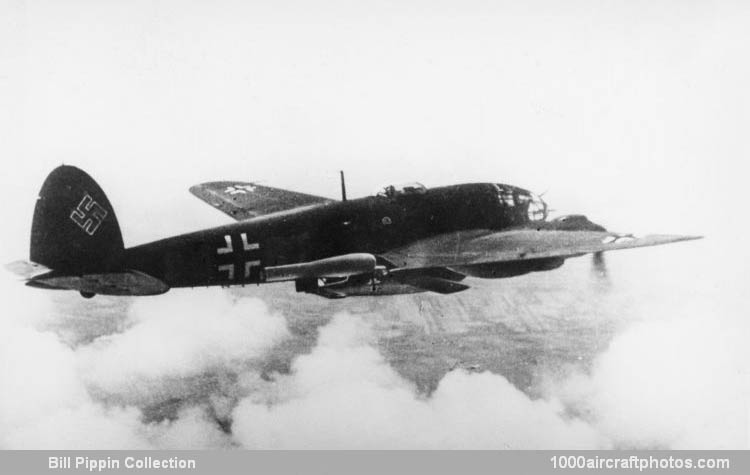03/31/2013. Remarks by Johan Visschedijk: "Experiments conducted at Peenemünde during the winter of 1943-1944 had confirmed the feasibility of launching the Fieseler Fi 103 in the air from the He 111 H, and plans for continuing Operation Rumpelkammer (junk room) - the bombardment of British targets with Fi 103 missiles - by such means in the event of launching sites being lost were prepared well before the Allied assault on Europe commenced on June 6, 1944.
By this time, production of the He 111 H was rapidly phasing out, but a number of He 111 H-21 bombers already on the assembly line were modified to carry a single Fi 103 missile on a simple rack under either wing, between the engine and fuselage, under the designation He 111 H-22. Simultaneously, a modification center was set up at Oschatz to convert a number of He 111 H-16s and H-20s as Fi 103 carriers.
The planned method of operation was to release the missile by night from an altitude of 1,500 ft (457 m), aiming it in the direction of a large city, its chances of falling in a built-up area being considerable. After a short course in the technique of air-launching the Fi 103, III Gruppe of Kampfgeschwader 3 became operational with the He 111 H missile carriers late in July 1944, commencing operations against London and Southampton from bases in Holland late in that month.
Also in the summer of 1944, testing began of releasing piloted Fieseler Fi 103 Rs from a Heinkel He 111, as pictured above. This work was done at Lärz by pilots from Rechlin but, after two had crashed, testing was continued by Hanna Reitsch and Heinz Kensche. Flights with the unpowered Fi 103 Rs were successful enough, though not without various nerve-racking incidents.
The last manned Fi 103 R flew on March 5, 1945, Leutnant Starbati was killed when after release from the carrier aircraft, both wings broke off. Subsequently the program was ended, and the manned version of the V1 never saw service."
